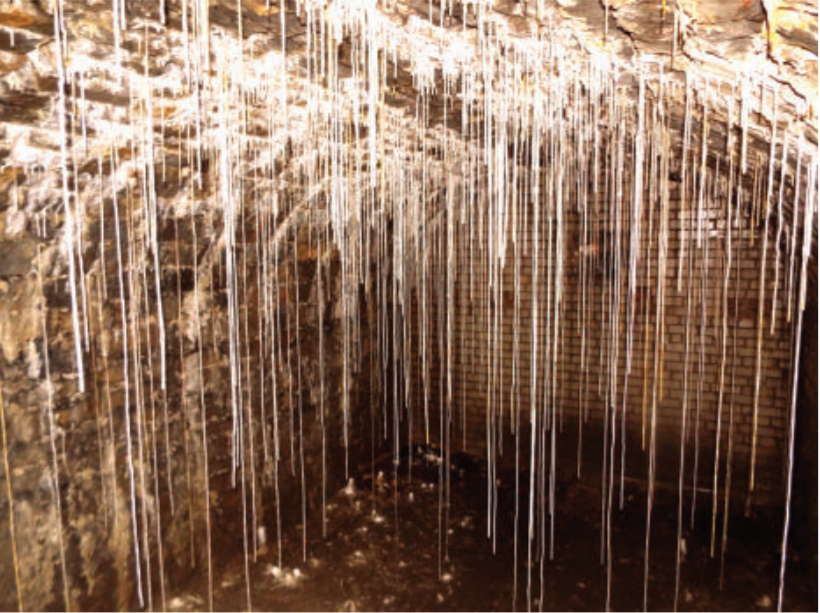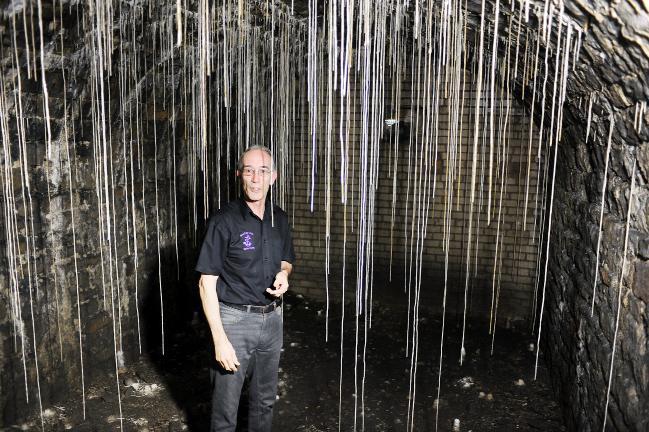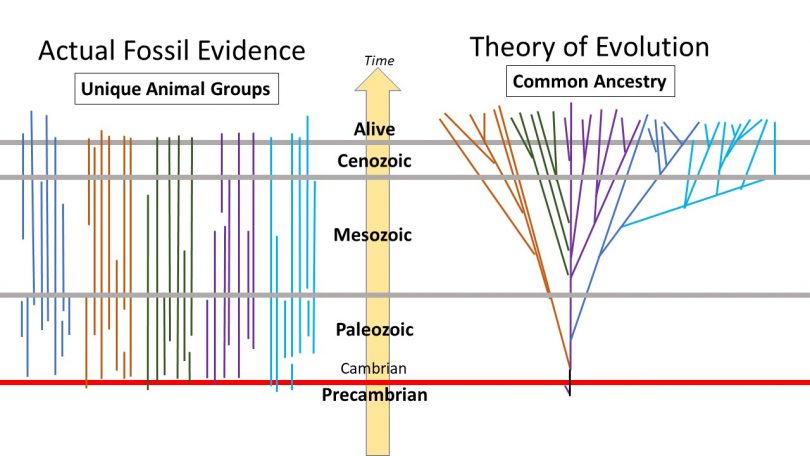
In The Anchor Inns cellar, hundreds of very long mineral stalactites have formed over the years. Also, on the floor of the cellar are corresponding stalagmites. These structures extend from floor to ceiling. The pub was originally built in 1655 but was later rebuilt in 1795. This has provided these stalactites and stalagmites only 224 years to have formed.

Similar limestone formations are found in caves all around the world and are supposed to be ancient. Guided tours routinely report such formations as being hundreds of thousands to millions of years old. Evidence that the earth is certainly much older than the biblical time frames of about 6,000 years.
While many formations are accumulating at very gradual rates as observed in the present. As an example, at Kent’s Cavern, a large cave system in the United Kingdom guides confidently report to tourists that it takes an astounding 1,000 years for the stalactites to grow one inch. Thereby, based on the size of the formation, the largest ones are well over 100,000 years old! 1
Using this same logic and math, the pub’s stalactites would be over 36,000 years old.

How do stalactites and stalagmites form?
The dominant mineral in stalactites and stalagmites is calcite or calcium carbonate that drips through limestone. Water cuts through the cavern ceiling, and as it drips, it deposits a ring of calcium carbonate on the ceiling as the carbon dioxide evaporates. Eventually, this process forms a mineral straw-like tube, ring by ring, called a stalactite. In many instances, another structure is also formed on the cavern floor below, called a stalagmite. Scientists have determined that the conditions that favor such formations include (i) a cavern to allow uninterrupted growth, (ii) steady water flow, and (iii) adequate air space to allow evaporation of carbon dioxide! 2
How long does it take for stalactites and stalagmites to form?
So how long does it take for these mineral straws to form? An article in Science Focus explains that “Limestone stalactites form extremely slowly, usually less than 10 cm every thousand years…some are over 190,000 years old.” That same article also points out that those that form much faster do so due to “a different chemical process.” Explaining that stalactites that form rapidly, such as those observed under concrete bridges, can grow as fast as a centimetre per year. 3 Concluding that the formations found in caves take thousands of years to form while others rapidly do so because of a completely different chemical process.

But wait, the formations in the pub’s cellar were formed by the same chemical reactions cutting through the limestone above. These had nothing to do with cement and involved identical chemical processes.
The actual science
It turns out that a group of scientists studied the chemistry of stalagmite and stalactite formations in actual cave conditions. They discovered that amid the many variables affecting the growth rate of these formations, it boiled down to how the carbon dioxide dissolved in the water flow combined with the temperature and pressure that determined the growth rate. Experiments revealed that the amount of carbon dioxide in the water varied massively by a factor of five. The dissolved carbon dioxide turns the water acidic. The largest finding was that the more acidic the water, the faster the limestone dissolved and faster growth. Actual growth rates were observed to form as quickly as one inch in less than eight days. 4
Ancient dates always rely on assumptions
In conclusion, we are constantly presented with physical evidence that is supposed as ancient based on assumptions and presumptions of Naturalism. Stalactite and stalagmite formation rates are certainly no exception. Uniformitarianism assumes the rates observed in the present have existed and persisted at the same rate from the beginning, but this is an assumption and not fact. Clearly, no one was there to observe the initial conditions or the formation rates. This is especially true for dates assumed from a few hundred years ago but gets much less reliable as assumptions extend into many thousands of years.
From a biblical worldview, we would fully expect the global flood as a major cause for massively larger water flows in the past as floodwaters receded off the continents. Additionally, it makes sense that those very flows might have formed many of the 17,000 cave systems discovered (many remain yet undiscovered) where were all formed where limestone was present.5 Limestone is formed by a sedimentary slurry of shell, coral, algal, and fecal debris pushed in massive layers by catastrophic flooding. Limestone is formed by the precipitation of calcium carbonate from lake or ocean water. 6
SOURCES
1 Creation Ministries International “Defying deep-time Dogma” by Gavin Cox https://www.creationmagazine.com/creation/2020_volume_42_issue_4/MobilePagedReplica.action?utm_source=newsletter&utm_medium=email&utm_campaign=TXCRTN200825002&utm_content=gtxcel&pm=2&folio=12#pg12
2 Britannica https://www.britannica.com/science/cave/Solution-cave-features#ref499883
3 Science Focus “How long does it take stalagmites and stalactites to form?” by Luis Villazon
4 One Place “How fast do stalactites grow?” By Paul Taylor, about CRSQ, 3/00, pp. 208-214, “What is the Upward Limit for the Rate of Speleothem Formation?”
5 Earlham College, http://legacy.earlham.edu/~fusonga/gabecaves.htm
6 “Limestone, What Is Limestone and How Is It Used?” by Hobart M. King, Ph.D., RPG Geology.com https://geology.com/rocks/limestone.shtml#:~:text=It%20most%20commonly%20forms%20in,from%20lake%20or%20ocean%20water.


